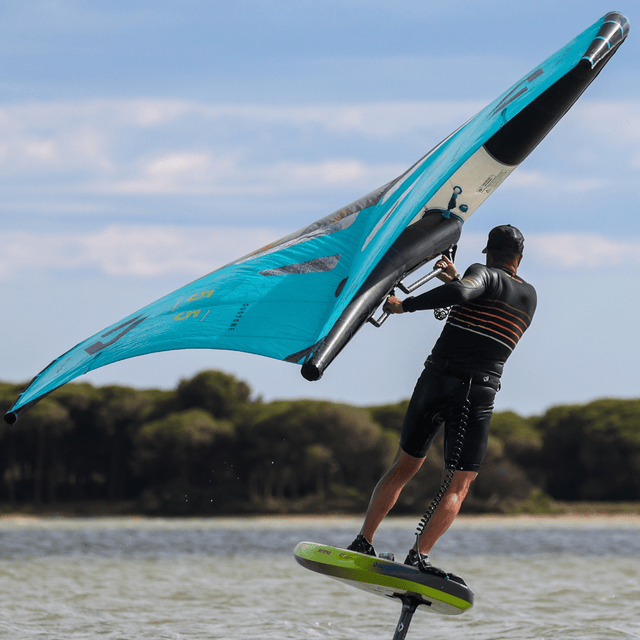Wing foil - Our advice
This is THE trending water sport since summer 2019. And since then, wingfoil has established itself as a full-fledged discipline: fun, accessible, and ultra-versatile. And as you know, at Saint Jacques, we love this freedom to mix practices based on the conditions.
Being able to adapt to conditions and make the most of them: you surf or grab your SUP when it's glassy, you go kite or windsurf when it's windy... and whatever you do, you have a blast. That's what it means to be a waterman or waterwoman!
What is wingfoil?
Wingfoil (also called wing surf or wing foiling) combines a kite wing with a foil mounted under a board. Already popular in recent years, it gained even more traction in 2025 thanks to equipment innovations: lighter wings, more stable foils, and more voluminous beginner boards...
-
THE WING FOR TRACTION
This type of wing has existed for nearly 40 years! Just like in the world of wetsuits, current models resemble prototypes from decades ago. In fact, this wing – originally called BirdSail – was invented by a Frenchman from Brittany, Roland le Bail (source).
It’s basically an inflatable kite you steer directly with your hands.
So it’s a kite? Not quite. Kites are larger (5 to 15 m²) than wings (3 to 6 m²) and are controlled with lines and a bar. Wings are more compact and handled directly with your arms.
Is it windsurf then? Still no! Windsurf sails are rigid and attached to the board. Wings are inflatable and independent.
It’s a hybrid of kite and windsurf — but simpler and more intuitive. No harness, no setup: just pump and go.
-
THE FOIL TO FLY
The foil is the large fin under the board that allows you to glide above the water with no friction. The feeling is amazing. Read our full article on surf foil.
-
THE BOARD TO FLOAT
Board volume is essential to start properly. Usually, the board should float more than your weight. For example, a rider of 80 kg uses a board with 100 liters. The more you progress, the less volume you’ll need.
In 2025, beginner boards are even more accessible: wide, stable, and easy to use – making the sport more inclusive.
Who is wingfoil for?
Initially adopted by kite, windsurf, and SUP riders, the sport is now reaching a wider audience thanks to improved equipment.
Advantages over kite:
- Faster setup, no lines to manage
- Safer: just let go of the wing to stop
Advantages over windsurf:
- Easier learning curve
- Smaller, lighter gear
In any case, the novelty and flight sensation are irresistible. Wing schools are booming.
Is wingfoil hard?
The wing is intuitive. The foil is trickier and requires balance. But in 2025, stable gear allows for faster progression.
Getting started is easier than ever – just pick good conditions: flat water and steady wind.
Wingfoil disciplines in 2025
FREERIDE
Fly over the water like a magic carpet – smooth, silent, and fluid transitions.
DOWNWIND
The holy grail: surf the swell with your wing in one hand. Ultimate freedom. Read our downwind article.
FREESTYLE
Jumps, tricks, competitions. The scene is growing fast — helmet required!
What wetsuit should I wear?
Wind increases chill. Wear the right wetsuit and protect your extremities (booties, gloves, hood).






0 Comments
There are no comments for this article. Be the first one to leave a message!